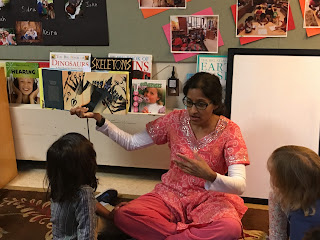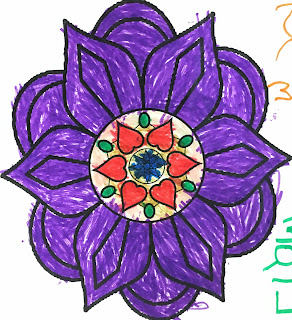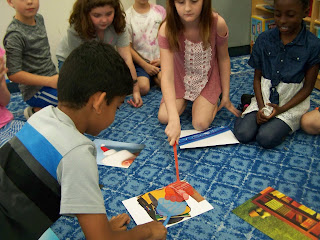I saw a dead bee on
my step and it was so cool because the patterns look awesome with its tiny
little stripes and it felt so fuzzy. And I saw cicada shells. I also heard
them. It almost sounds like leaves rusting very loud. Or Styrofoam when you
squeeze it. I saw an amazing looking bird. I saw it run away with its tiny
little legs. I also saw a wood pecker. It looked like a mix of a cardinal, a
robin and a chickadee. It pecked on the tree back and fourth it remind me of
chopping a piece of wood in half. I also saw the beautiful trees across the
street I noticed they were starting to change colors they were beautiful orange
red.
- Amani, 4th
grade
Stenographer pads are just another kind of notebook. But within the hands of 4th
graders at Abington Friends School, these stenographer pads become the magical
world where the words of 9 and 10 year
olds pop. Inspired by Marie Howe’s talk on the popular podcast On Being, 4th
grade decided to complete an exercise in sensory details. Students would
document different things they noticed about the world around them. This is to
allow students to practice the art of noticing and giving words to what they
see, feel, taste, think and hear daily. The results prove to be evidence of the
growing skills of our illustrious friends.
We started by reading Jane Yolen’s gorgeous text Owl Moon. We took time to notice the
plethora of sensory details that were present in it: from the sounds of owls
hooting to feet crushing the snow as a young one goes owling with her/his
father.
We then armed ourselves with our stenographer’s pad and went
searching for sensory details around the school’s campus. Students quickly
learned that if they were still and paid extra notice to their surrounding, the
world had much to offer them: beauty.
As homework, students were asked to document what they
notice with their senses. Some students told instead of showed. And that was
ok. As they practice and receive feedback they will grow. The grammar was off ;
the spellings needed some work. But that was okay. Why? Because the main purpose
of this exercise was for students to have a space to freely explode their
thoughts, without thinking about edits, and give words to their surroundings.
As the year progresses, these descriptions will be nuanced
as metaphors, similes and other sensory details are introduced. The hope is
also, that as they practice giving words to the world around them that they
will put this into their classroom writing. One could consider these notebooks
mere stenographer’s pads. But to these 9 and 10 year olds, it is the beginning
of discovering and articulating the beauty of the world around them.


































